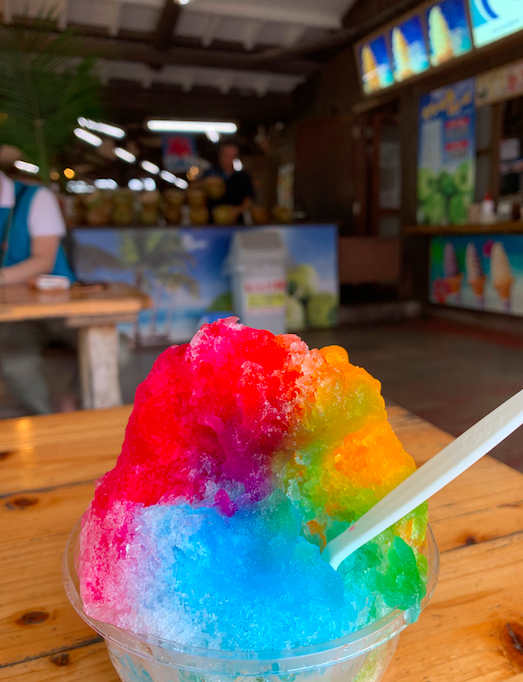
As we hugged our beloved professor goodbye and watched the elevator doors close on the lobby of our hotel in Kyoto, it finally felt real that our time together was coming to an end. We rode the bus to Kansai International Airport in Osaka and everyone but me got off at Terminal 1 and headed to their flight home. After eleven days together, it was time for me to say goodbye to the SJMC Japan crew and head off to the islands of Okinawa.
Okinawa is located in the East China Sea, between Japan’s mainland and Taiwan, and is the exact size of San Antonio (seriously, Google it). Known as “the Hawaii of Japan,” Okinawa is renowned for its tropical climate, white sand beaches and laid-back attitude. Once the center of the Ryukyu Kingdom, Okinawa contains many well-preserved castles and shrines. It is home to more centenarians (people older than 100) than anywhere else, and has the highest life expectancy for women in the world.
So, what’s the secret to this magical faraway place of beaches, ancient castles and long life? I made the trip to find out. Here are some highlights, tips and notable mentions.
Traveling
I boarded a domestic flight from Osaka to Naha (Okinawa’s capital) and watched the big island disappear from my window, with nothing but water beneath us for the rest of the two-and-a-half-hour trip. I arrived in Naha in the early afternoon and collected my luggage from baggage claim (so far, so good) before heading for the monorail that would take me to my hostel in the city center.
By this point, I had considered myself well-versed in the art of subway and train riding, having used them to get almost everywhere in the last two weeks around Tokyo and Kyoto, so how hard could a two-car monorail really be?
I grabbed my handy-dandy Suica card (used for subways and trains on the mainland) and scanned it confidently at the entrance, only to be met with a closing gate, flashing red light and embarrassing “EEAH” sound, signaling a dumb tourist was in the vicinity. I looked at the operator confused holding up my Suica card, to which she responded “NO SUICA” and pointed to a kiosk off to the side. I lugged my bags over, suddenly noticing how intense the humidity was, and began pushing buttons on a screen. Everything was mostly in Japanese, but I saw something labeled as “1 Day: ¥250” and pressed it. A ticket zipped out that I took back to the entrance and scanned through with.
Who said solo travel was so hard? A few stops and a short walk later, I arrived at my hostel. Home sweet home for the next three days.
Weather
I know I promised you white-sand beaches and Japanese Hawaii, so let’s get straight to it: it rained the whole time. Much to my shock and disbelief, it actually does rain during Japan’s rainy season (June to mid-July). Crazy, right? My initial plans of sun-bathing, snorkeling, island hopping and high-speed ferry rides were literally washed away, as all of these activities were closed until further notice.
I had been tracking Okinawa’s weather for a couple weeks, so I knew this would be a possibility, and though I was disappointed that the sky hadn’t magically cleared up just for me, I decided to embrace the rain, just as we had on the mainland. This was a major lesson I learned in Japan about traveling; you have to roll with the punches. Just like normal life, things don’t always go as planned, and rather than dwelling on how different reality is from what you had in your head – you can understand that no matter what, you’re in a place you may never be again, and therefore have no choice but to make the most of it.
I honestly didn’t mind the rain very much, and still found plenty of fun things to do while in Naha. I even managed some beach time – more on that below.
Naminoue Shrine
Naminoue, which literally means “above the waves,” sits atop a cliff on the beach in Naha’s downtown. It is dedicated to nirai kanai, the source of all life in Okinawan mythology, and was a sacred place sailors would go to pray for safe travel at sea. Like many of the buildings in Okinawa, most of the Naminoue shrine was destroyed in WWII, but has since been rebuilt and restored. A popular destination for tourists due to its dramatic oceanside setting, Naminoue-gu is still used by Okinawans today for religious purposes and events.
I visited Naminoue-gu my first day in Okinawa and found it to be a very mystical and beautiful place. Only a few blocks from my hostel, I walked there in a few minutes through some early-morning mist. There were not many people around, and those who were did not appear to be tourists. I followed the normal routine (toss in some coins, ring the bell, clap twice, bow, clap once more) and gave a quick prayer before heading down to the beach.
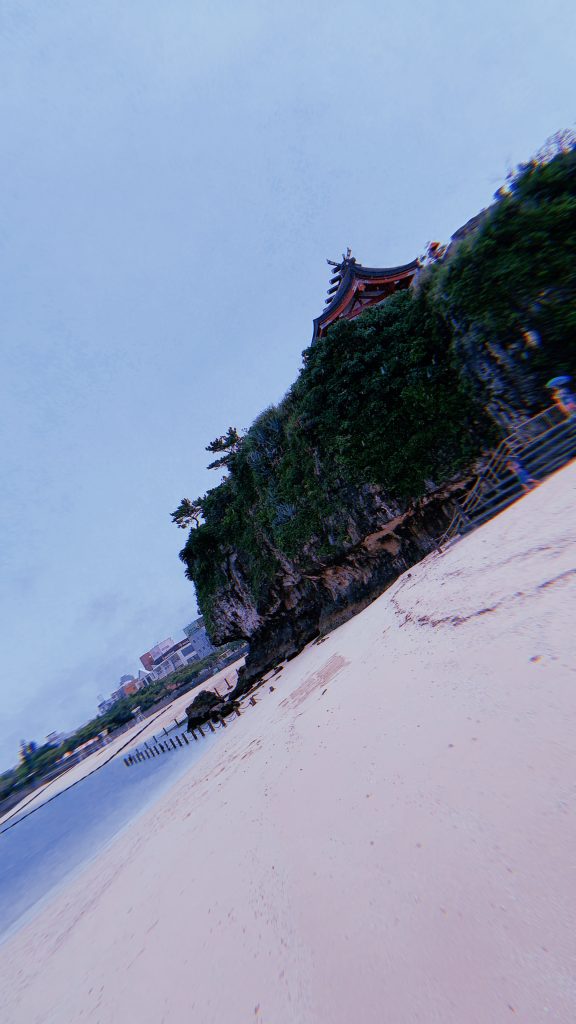
The cliff that the shrine rested on was so small you could walk all the way around it in a couple of minutes, almost like a large boulder that had jutted out of the Earth for the sole purpose of holding this tiny shrine. I slipped off my shoes, hiked up my skirt and waded out into the water about three feet deep until I found a cave-like opening on the front of the cliff that offered up a tiny private beach. I sat here a while, wondering what this spot had looked like hundreds of years ago, until the rain picked up.
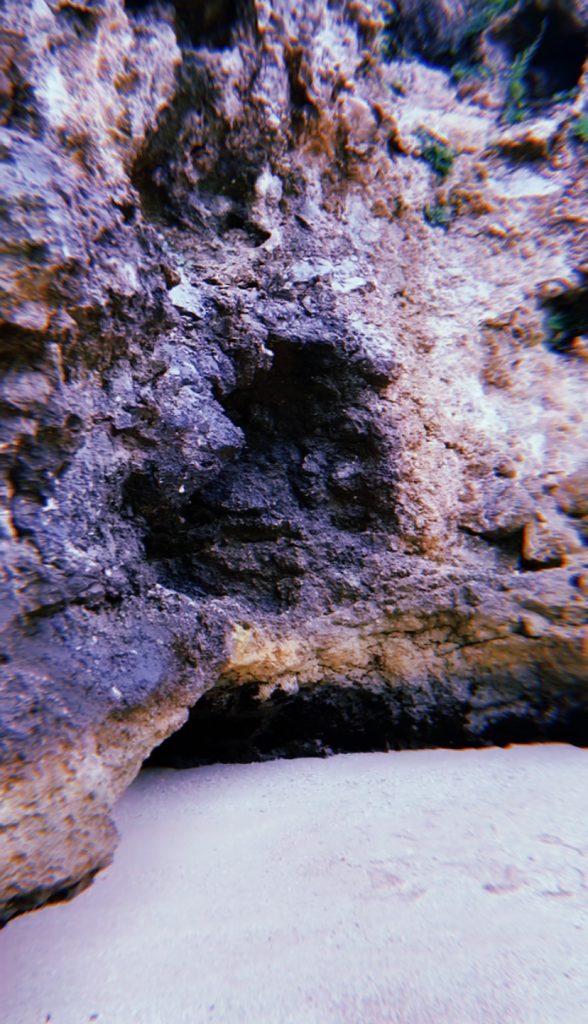
Kokusai Dori
This stretch of shops, bars, markets and oddities is one of the most popular streets in downtown Naha. I visited at night, which meant neon lights covered each building, mixing with the rain to create a saturated glow all around. If not for all of the palm trees and kariyushi shirts (Okinawa’s version of Hawaiian shirts), I might’ve thought I was back in Tokyo.
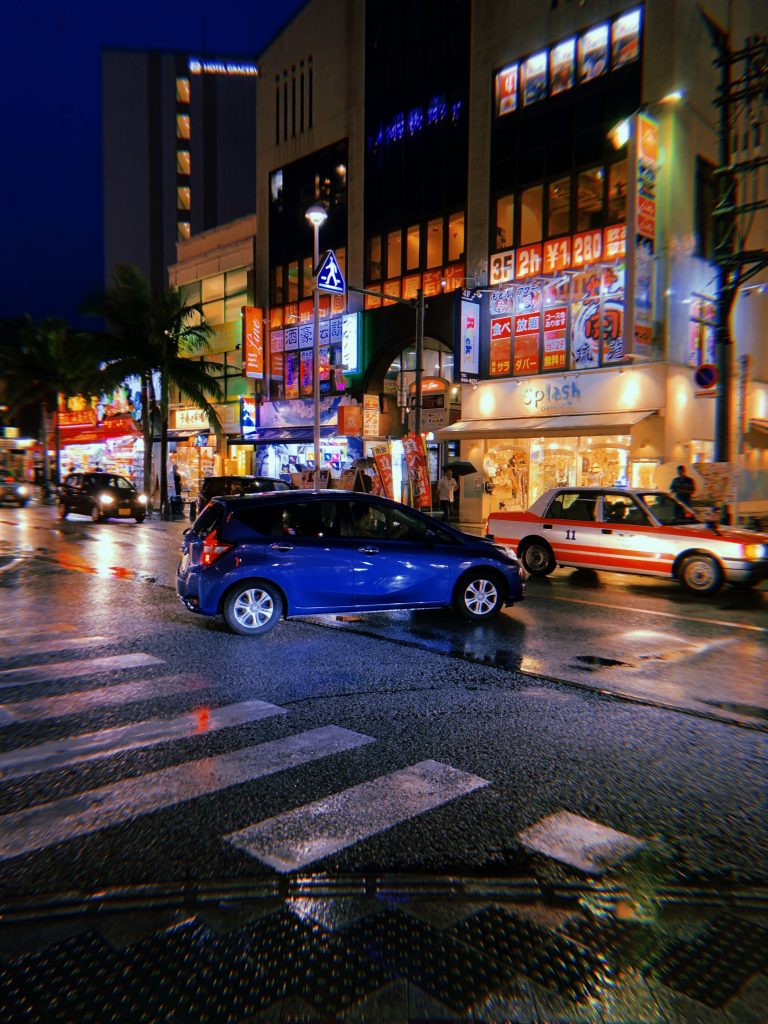
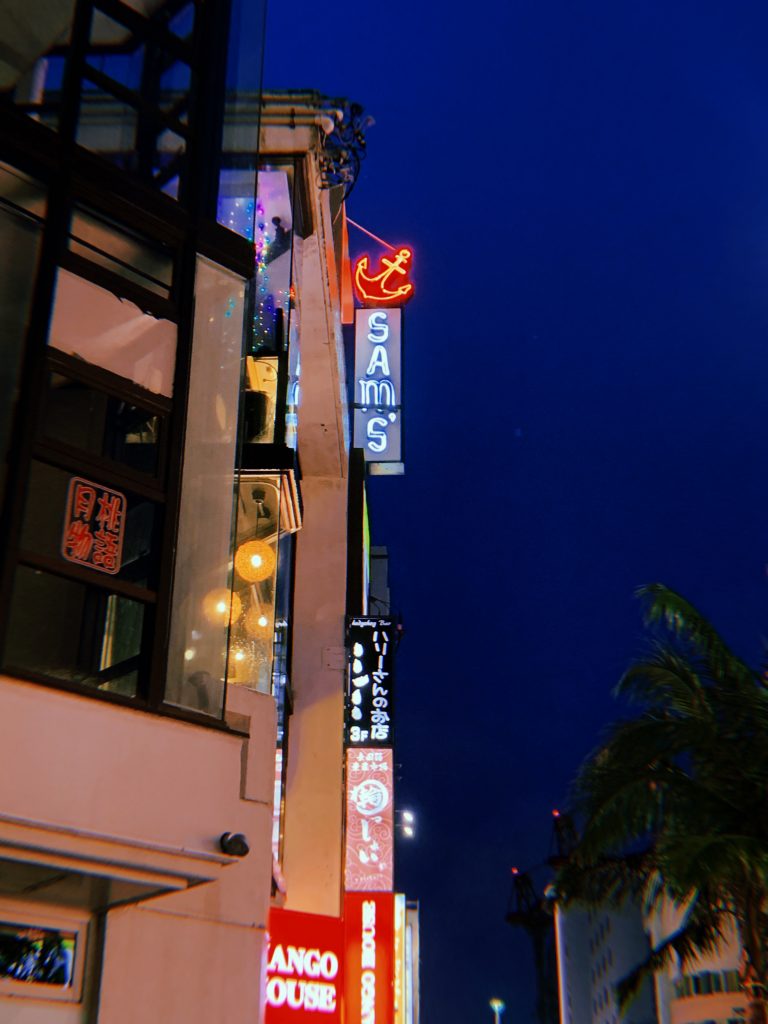
Each store or restaurant was stacked two or three-high, and from the street, I could see through the foggy windows scenes of noodle-slurping, beer-drinking and dancing. I followed a side street into a maze of an open-air market where men with flyers and women selling shaved ice crowded the narrow walkways.
Different versions of shisa (statues of Chinese-derived guardian lions, basically the mascot of Okinawa) were being sold absolutely everywhere, along with jewelry, beach attire, plants, pottery and Japanese furins, or glass wind chimes.
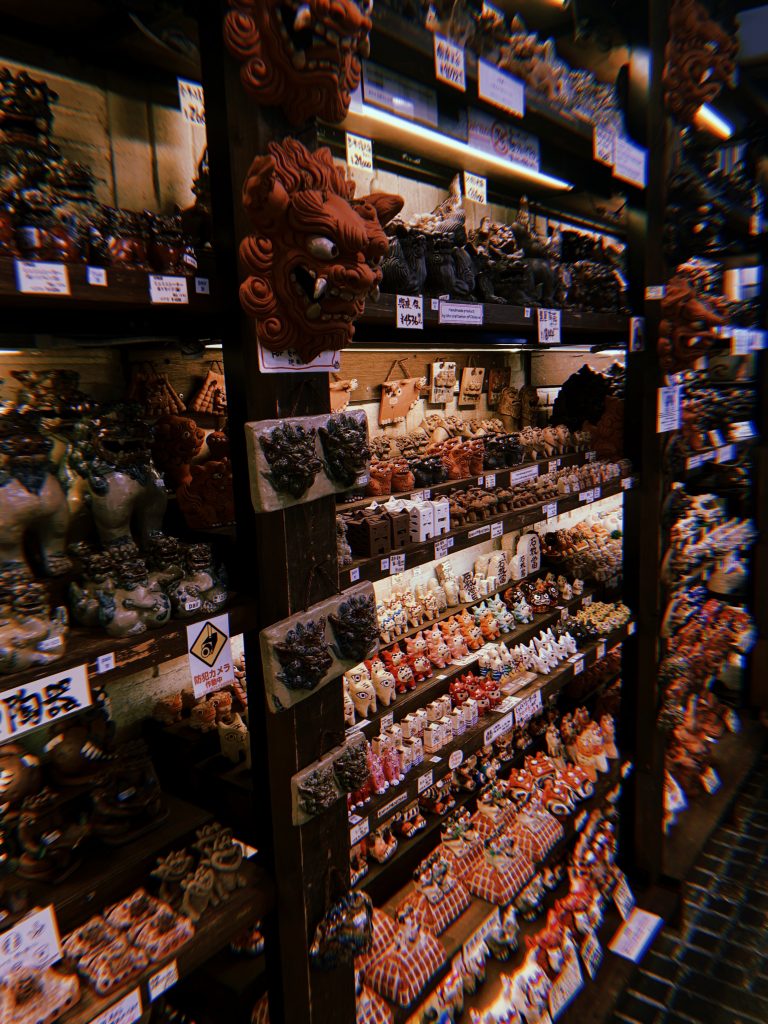
Food
The food I ate in Okinawa was some of my favorite from the entire trip, so it’s only right that I mention a few here. First, there was a bakery right around the corner from my hostel called Ohacorte that was sooo good. Yes, it was mainly western food, but their french toast was just too good to pass up. It also was a very aesthetically pleasing place to eat and plan the day.
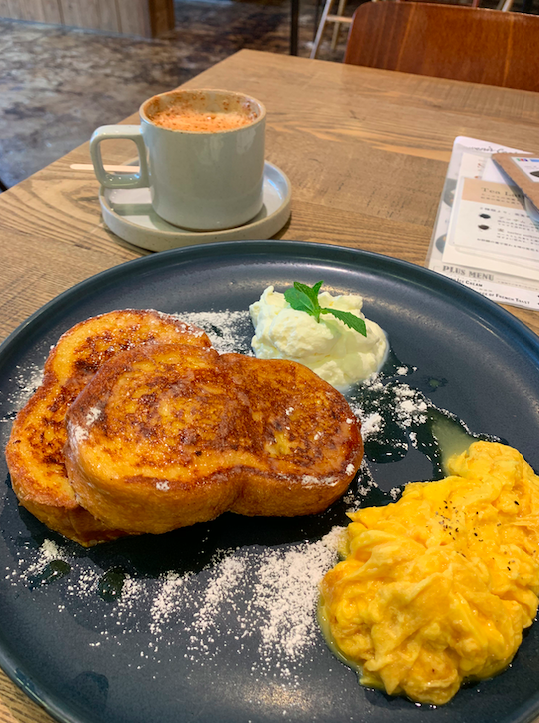
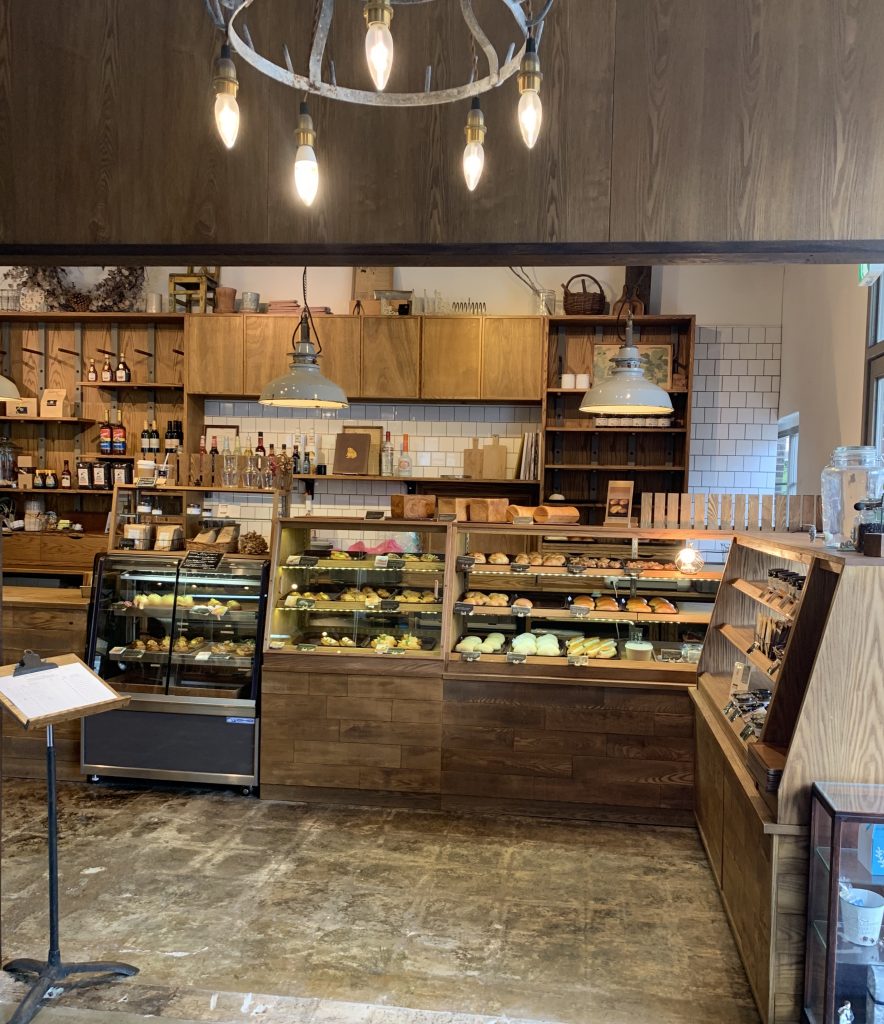
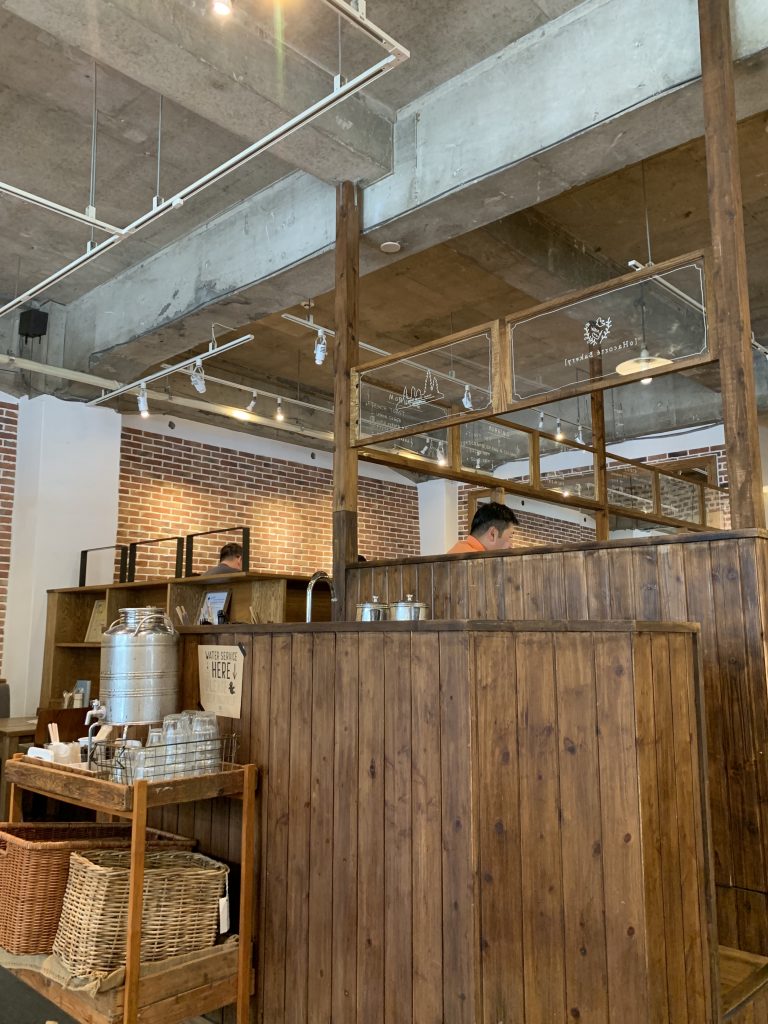
I also had a shrimp tempura burger with rice cakes for buns from a fast food joint more times than I care to mention, and a large buffet dinner where I ate my body weight in Okinawan food for ¥800 (about $8 USD).
Gyoku Sendo Cave
This impressive cave system is about an hour’s bus ride from Naha. A day pass for ¥1,200 will get you entry and unlimited time exploring inside. The path through the cave, depending on your pace, takes about an hour to walk all the way through. Gyoku Sendo is a massive underground cavern, with waterfalls, insane stalagmite formations and fossils of extinct deer species poking through the rock. The internal temperature is very cool and the eerie silence throughout is pretty surreal.
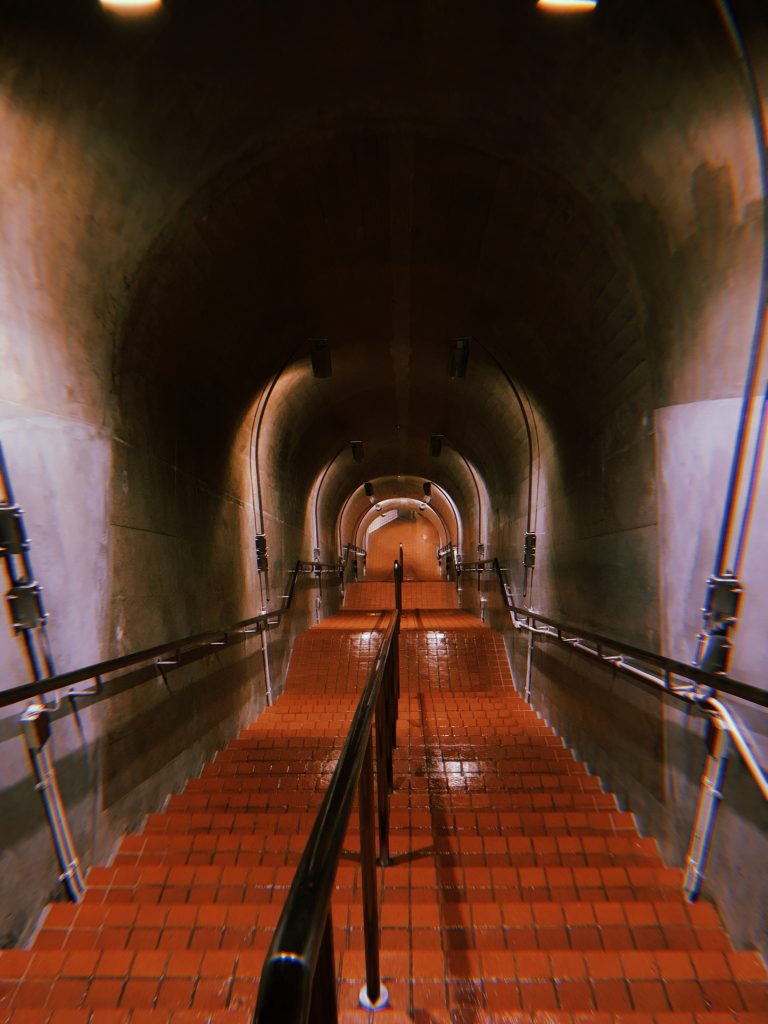
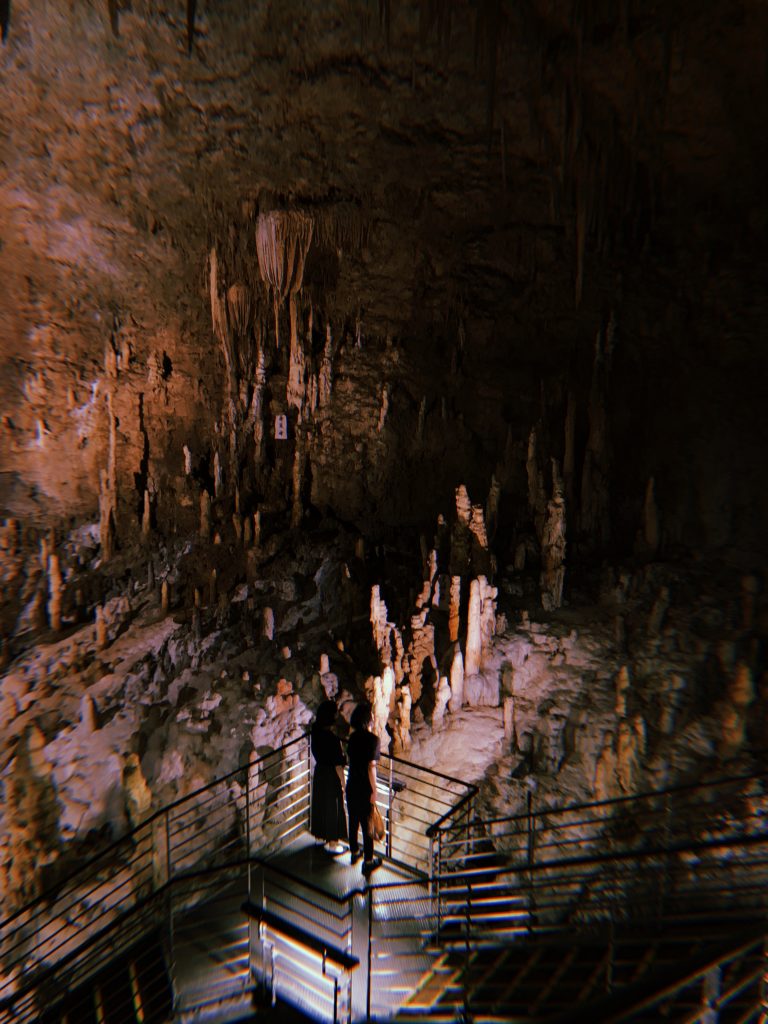
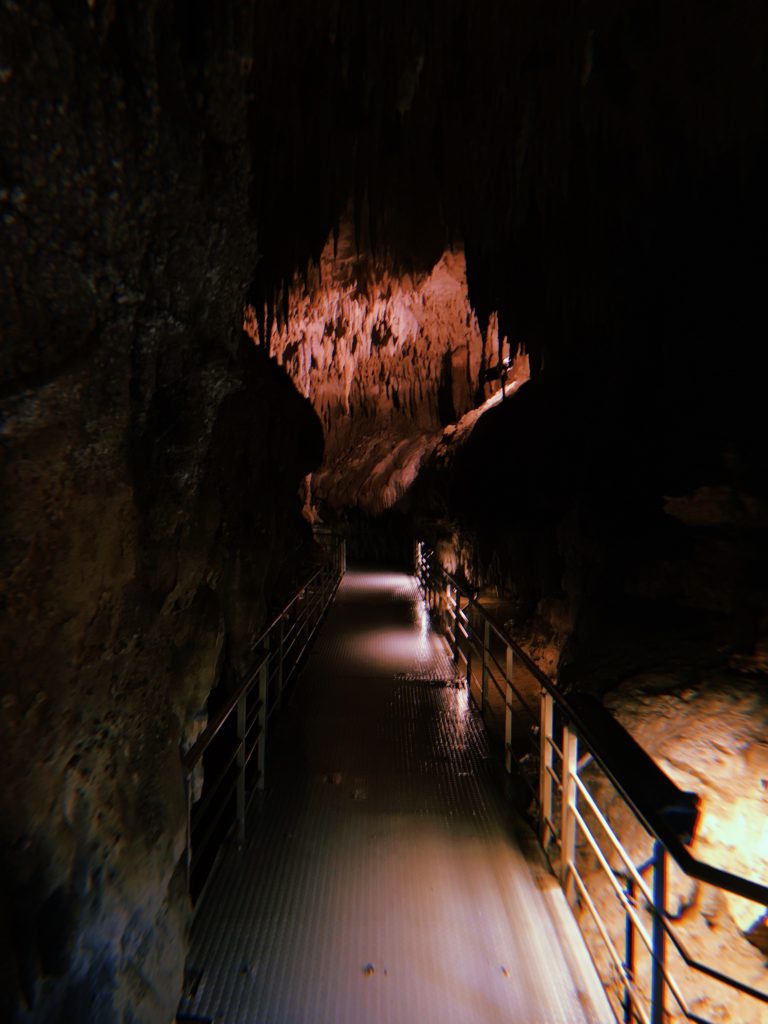
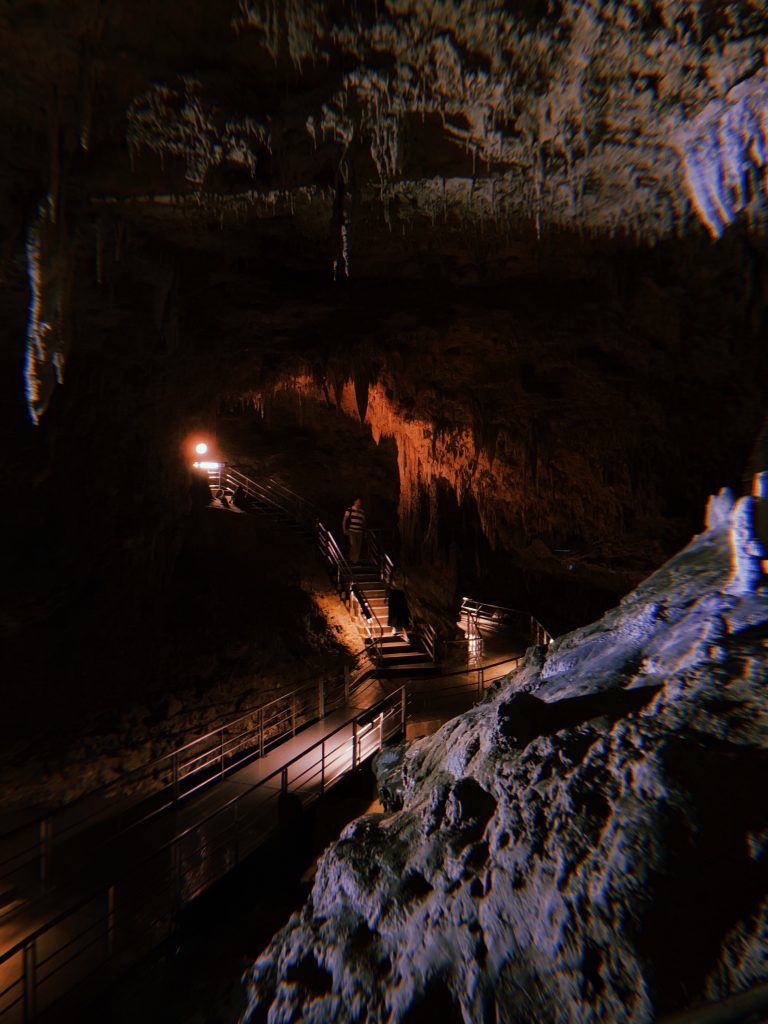
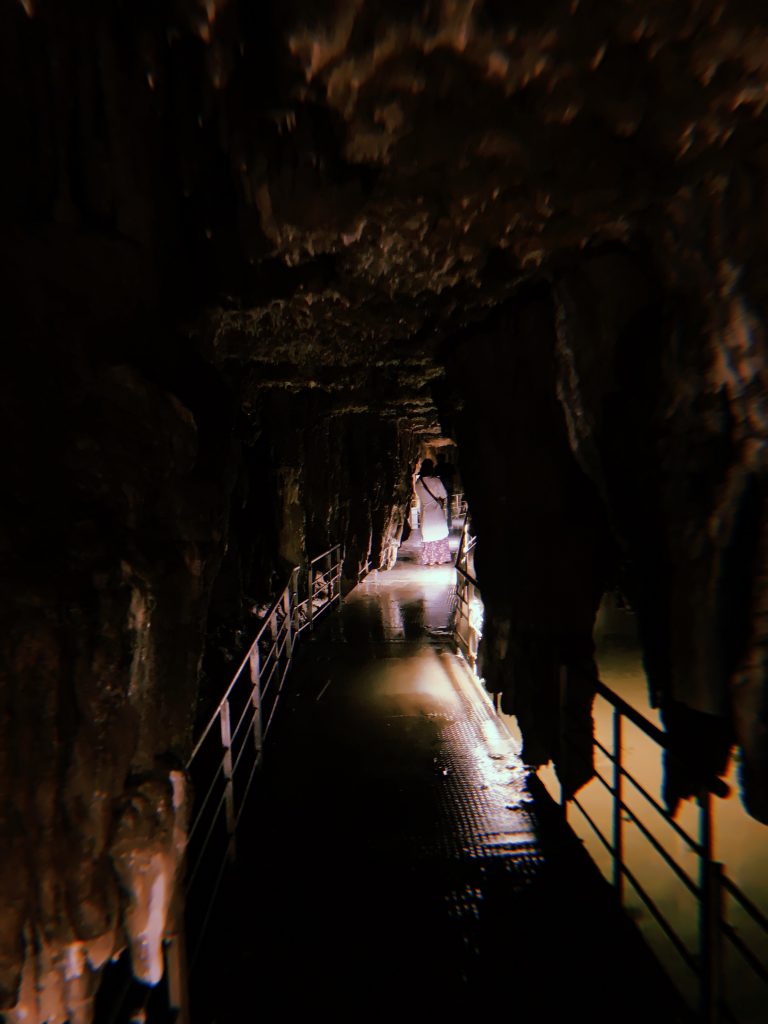
Despite the weather, I’m so glad I got to experience Okinawa even for the short time I did, and can honestly say it’s a place unlike any other. I would definitely recommend the trip to anyone visiting Japan’s mainland, especially since the flight over is so inexpensive. I never discovered the secret to its people’s longevity, or even what a sunny day at one of its beaches looks like, but I left Okinawa feeling like I had gotten the solo adventure I was after.








Wow! I love this essay, Samantha. I’ve always wanted to visit Okinawa and you took me close through all the sights, sounds, smells, and tastes from your trip. Thank you for the vicarious pleasure!